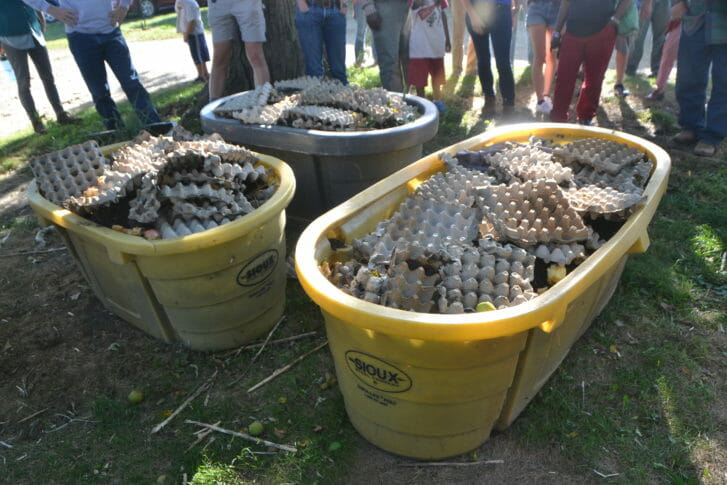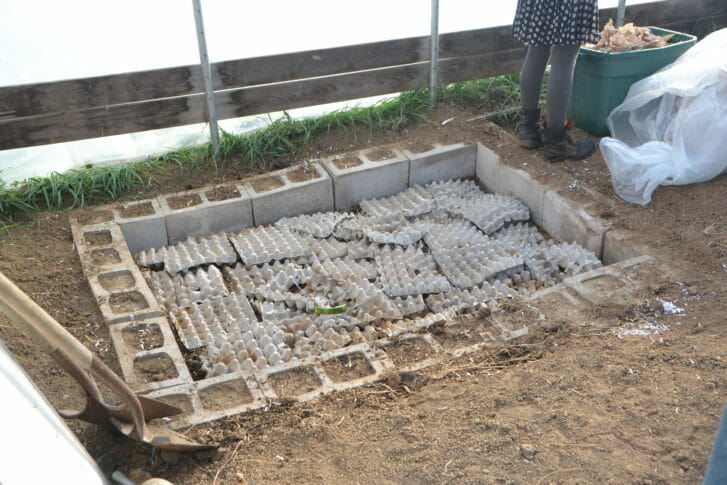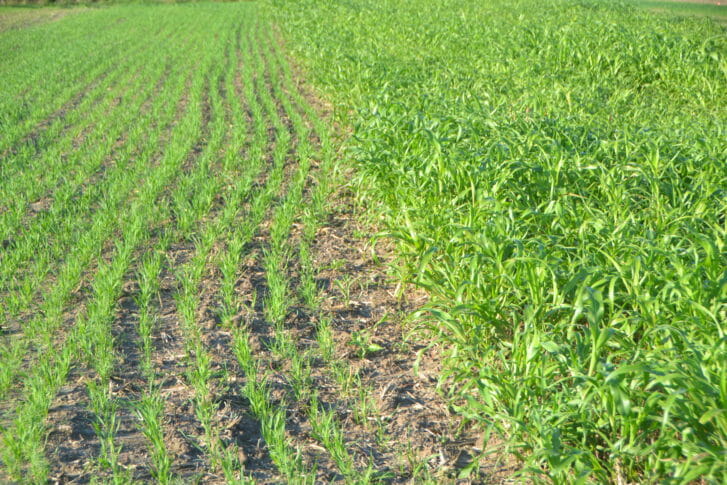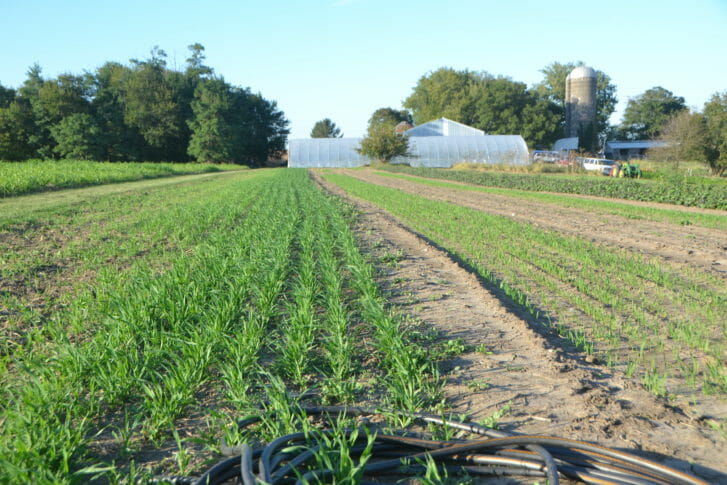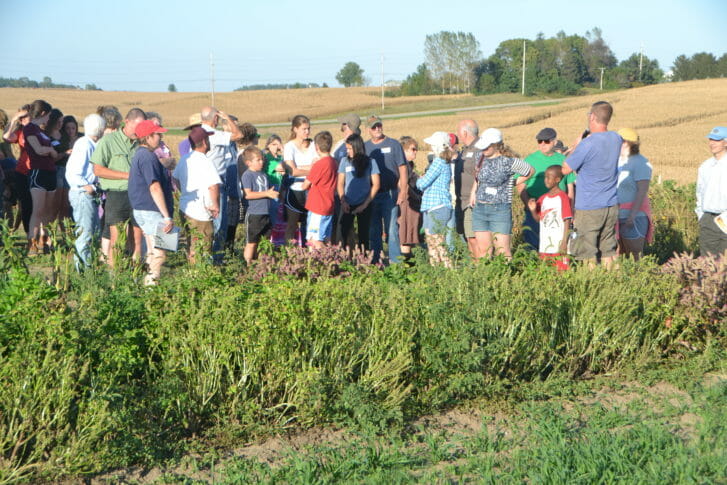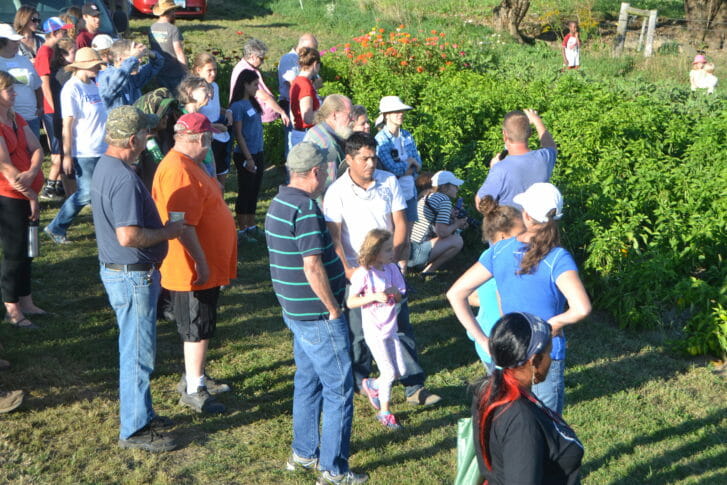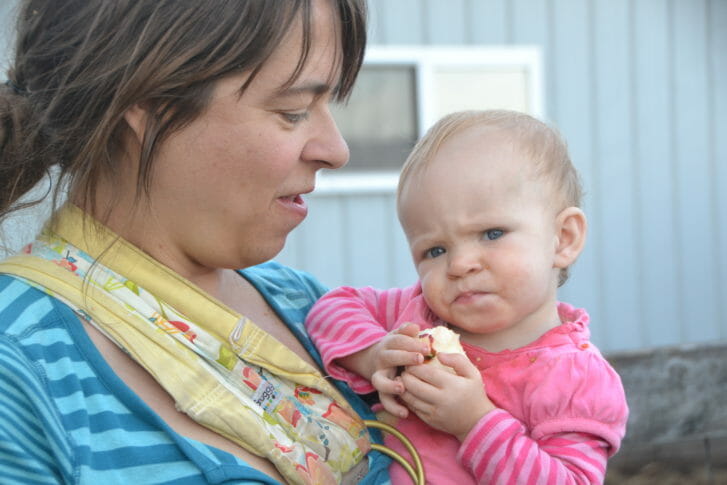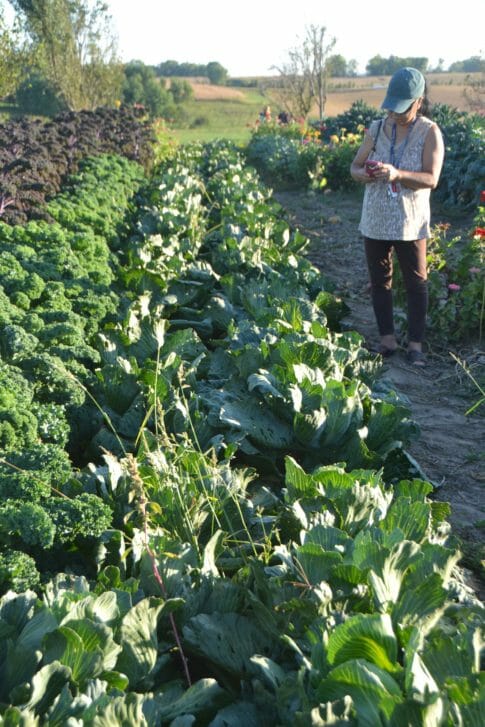Field Day Recap: Scattergood Farm – cover crops and vermicompost, Sept. 26
Mark Quee began at Scattergood Friends School in 1999, and has built the Farm at Scattergood into a diverse system involving vegetables, fruits, sheep, pigs, cattle, and on occasion, chickens. This field day focused on Mark’s experiences using cover crops in vegetable systems and making vermicompost, or worm compost.
Mark’s favorite receptacles for vermicompost are cattle waterers that are no longer fit for use in the pasture (small crack, puncture, etc). “The vermicompost seems to finish from high to low. So as the worms drop down we scrape the top, when the worms have moved down again we take some more. We don’t go all the way to the bottom; when we get down pretty far we just start filling it again with layers of aged animal bedding and manure, paper towels and shredded paper, with egg cartons on the top. We don’t use outdoor bedding because there are too many weed seeds and the vermicompost doesn’t get hot enough to kill them. We don’t use vegetable scraps, but they could be incorporated – as long as the mixture isn’t too wet.When it’s warm enough, the vermicompost will be ready in two months. It’s important to have more than one container so you can fill one while the other is curing.”
The main problem with the waterers is keeping them warm enough for the worms to survive the winter, or even better, stay active during the winter, and their capacity to make vermicompost was limited by the size and number of containers.
Mark and his students are trying vermicompost in a pit inside the high tunnel, an idea Mark got from John Biernbaum at Michigan State University. The pit is four feet deep, lined with concrete blocks. It is layered with aged manure and shredded paper and paper towels, then covered with egg cartons. They will put blue board (foam board) over the top at night, and hope to overwinter their red wigglers without having to use supplemental heat. Students are using vermicompost as part of a SARE project; they are investigating what percent mixture of vermicompost in the potting media has an impact on the growth of tomato plants.
Mark’s favorite receptacles for vermicompost are cattle waterers that are no longer fit for use in the pasture (small crack, puncture, etc). The only problem is putting them somwhere warm enough for the worms to survive the winter, or even better, stay active during the winter.
“The vermicompost seems to finish from high to low. So as the worms drop down we scrape the top, when the worms have moved down again we take some more. We don’t go all the way to the bottom; when we get down pretty far we just start filling it again with layers of aged animal bedding and manure, paper towels and shredded paper, with egg cartons on the top. We don’t use outdoor bedding because there are too many weed seeds and the vermicompost doesn’t get hot enough to kill them. We don’t use vegetable scraps, but they could be incorporated – as long as the mixture isn’t too wet.When it’s warm enough, the vermicompost will be ready in two months. It’s important to have more than one container so you can fill one while the other is curing.”
Facing soil fertility issues a few years into the farm, Mark knew the farm couldn’t afford to import fertility. Rather than purchasing fertilizers, he decided they were going to invest time, energy, and knowledge into creating fertility through cover crops. “We have sun, we have rain, we have soil – we can do this.” “Now our fertility is all about building it here, on site. So our cover crop bill is pretty big, but our input costs for fertilizers are non-existent.”
Oat cover crop and sorghum Sudan grass cover crop at Scattergood Farm.
On the right of the photo is an experiment using oats as a cover crop to overwinter garlic. Using October-planted garlic mulched with straw as a control, Mark is testing if garlic can be planted earlier (September) and if the earlier planted garlic will survive if overwintered with only a winter-killed oat crop as mulch (no additional straw). We’ll find out next summer!
During the tour of vegetable and cover crop fields, Mark described the performance of various cover crops on weed supression and biomass production, and how different implements have worked for planting and terminating cover crops. Mark was fortunate to get his hands on a no-till drill several years ago, which has vastly improved their cover crop germination, weed suppression, and has saved them a lot of money on seed (versus broadcast seeding). Mark sometimes does a shallow till with rototiller just to kill the weeds before drilling. Still, not every field is a success, and attendees got to see some poor germination, too!
Mangels, a fodder beet, are sizing up to be fed to the farm’s pigs – Scattergood also uses mangels to finish turkeys (turkeys never get tired of eating mangels, though sometimes the pigs do). The photo on the right shows a regular-sized mangel at Mark’s feet.
Sixty-five field day attendees check out Mark’s bell pepper variety trial. Mark started planting flowers on the ends of rows to attract pollinators; now they serve a dual purpose as variety markers.
A young field day attendee assesses the maturity of a farm-grown apple (and the photographer?).
Kale and cabbages are staples of the Scattergood Friends School cafeteria.
Mark and Greg King unpack the Drift Catcher, a citizen science tool provided to Scattergood Farm by Pesticide Action Network. Because Mark did not notice too much spraying around him this year (to his great relief!) SO he didn’t set up his Drift Catcher this summer. In previous years, he has been very nervous about nearby spraying, especially since all the food he grows is for the school cafeteria. Greg has participated in the Drift Catcher program for several years, spurred by his crop of high tunnel tomatoes being hit with pesticide drift. For more about Practical Farmers work on pesticide drift, see our website and blog, or contact the office (515-232-5661).
At the end of the field day, Scattergood chef Irving Treadway and friends prepared a meal of pork stew, vegetarian stew, cole slaw, broccoli, bread, and strawberry-apple crisp. Field day attendees joined Scattergood students and faculty for dinner, providing a good space for conversation at the end of a great tour.

